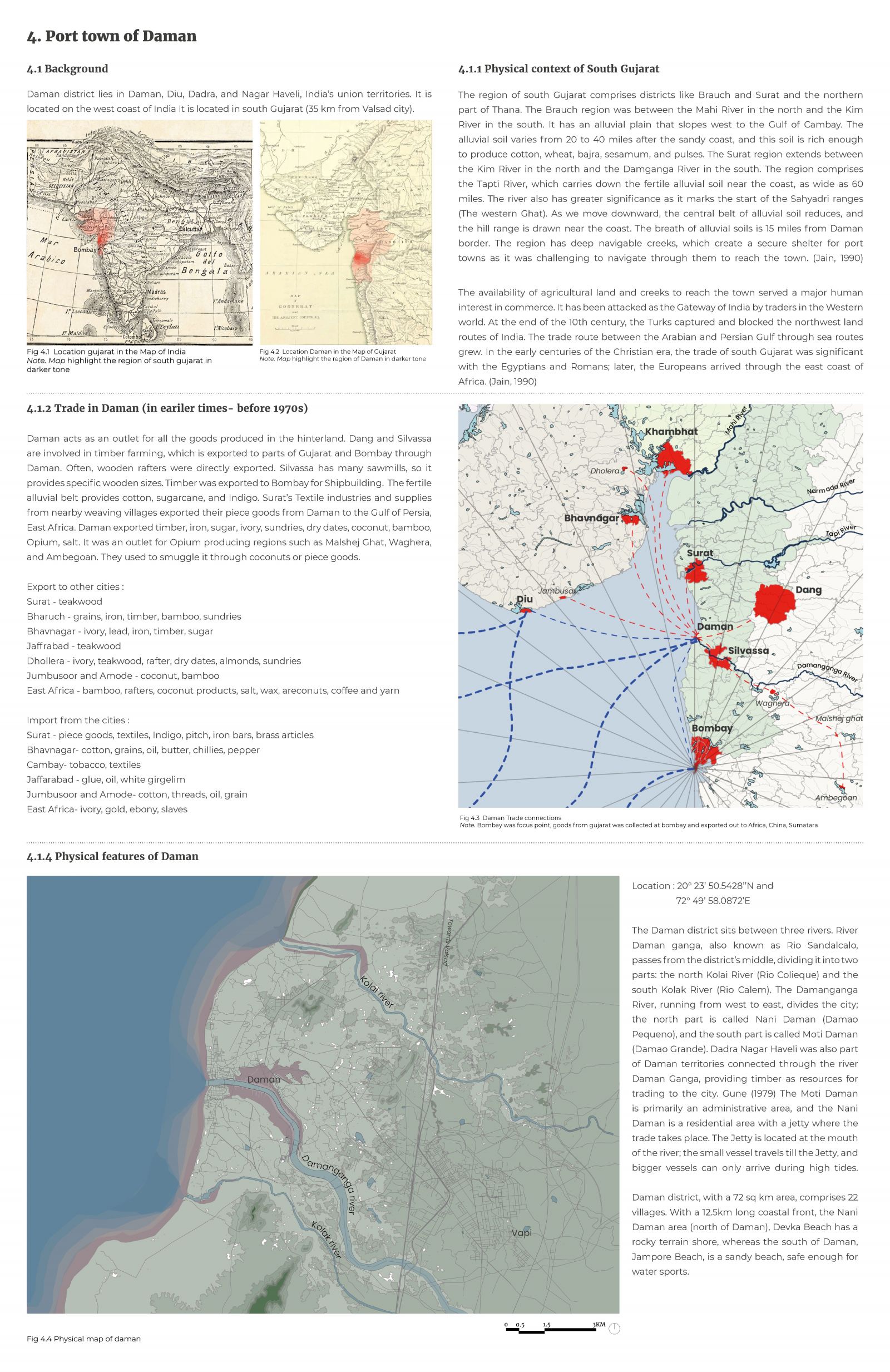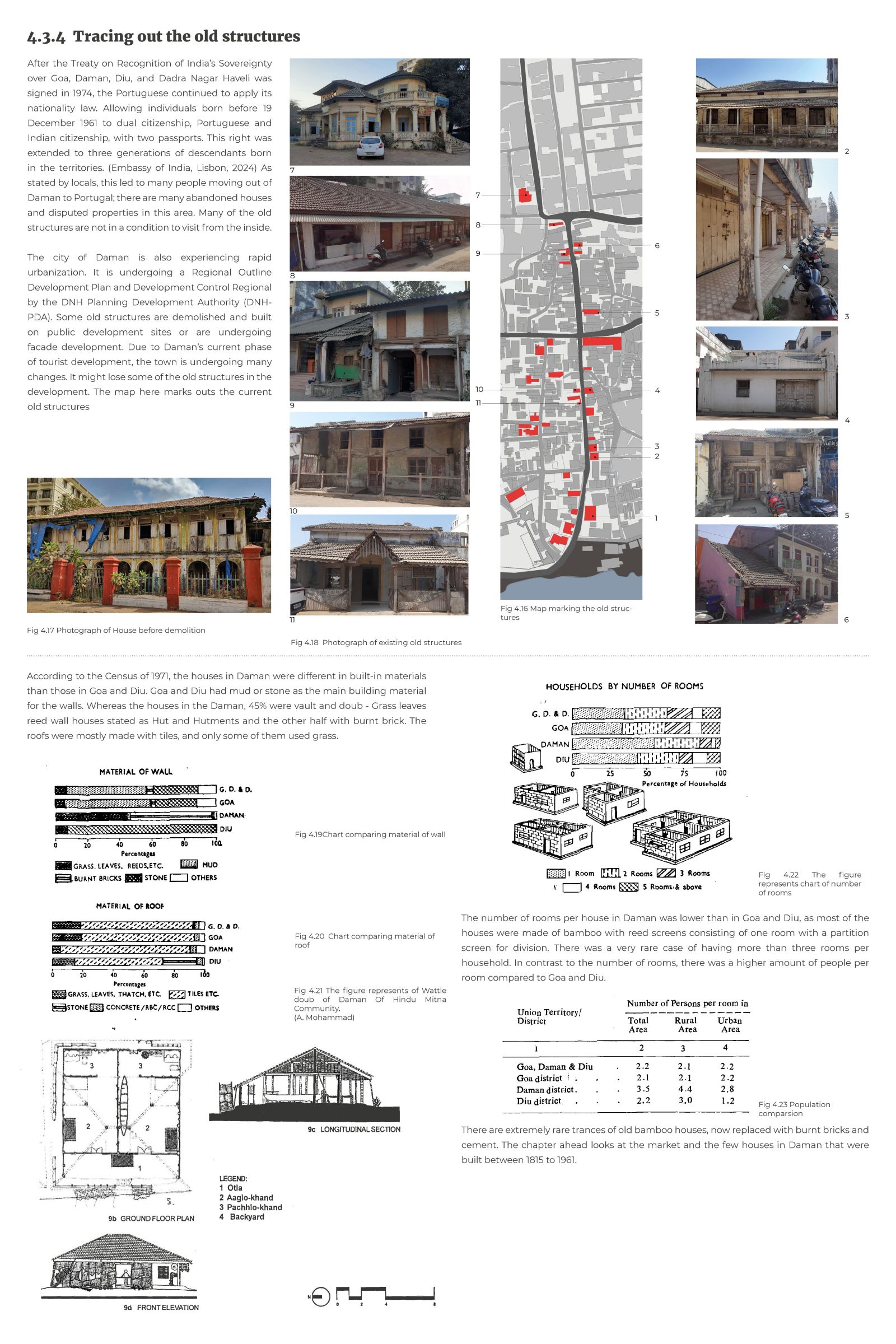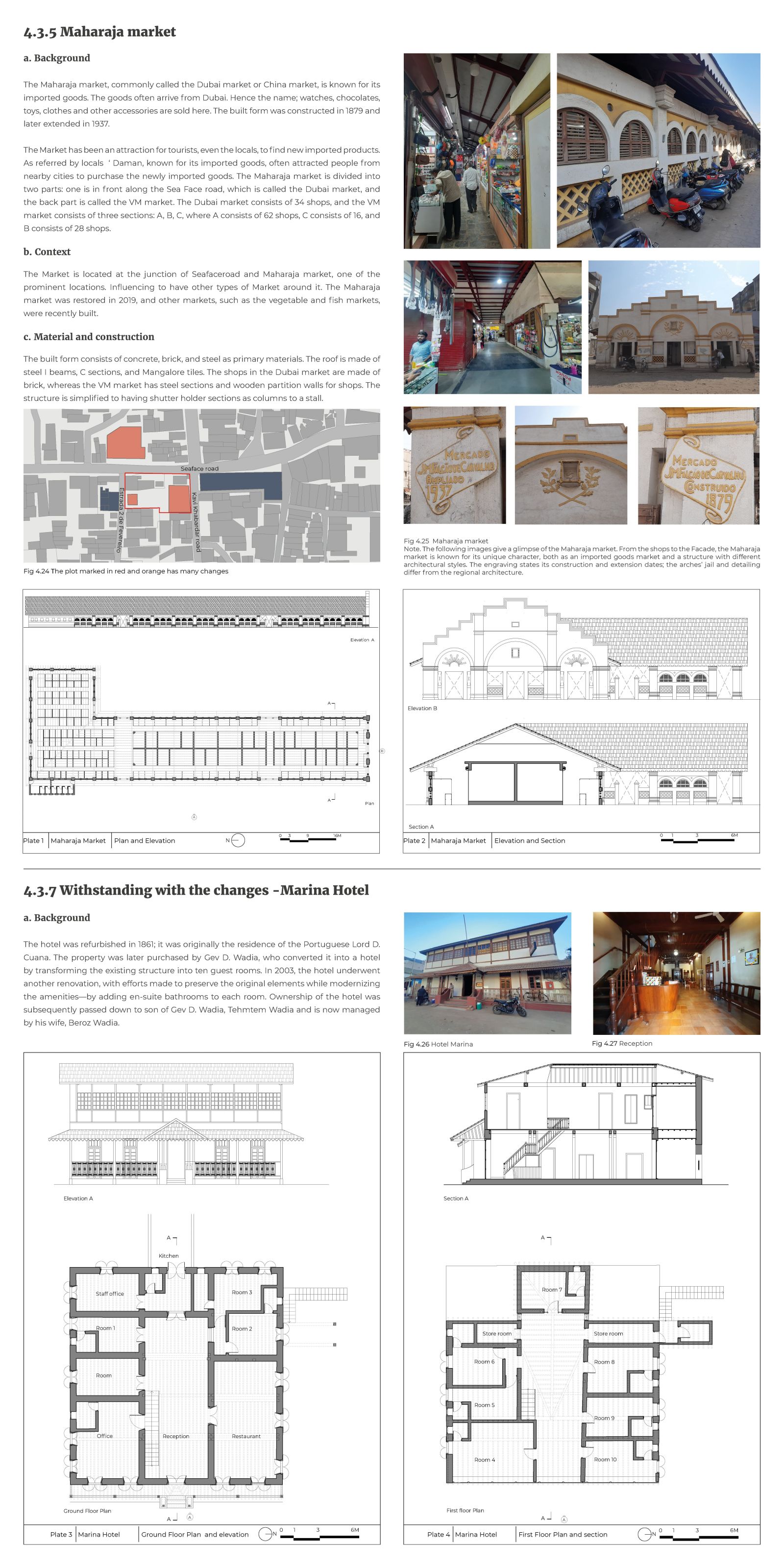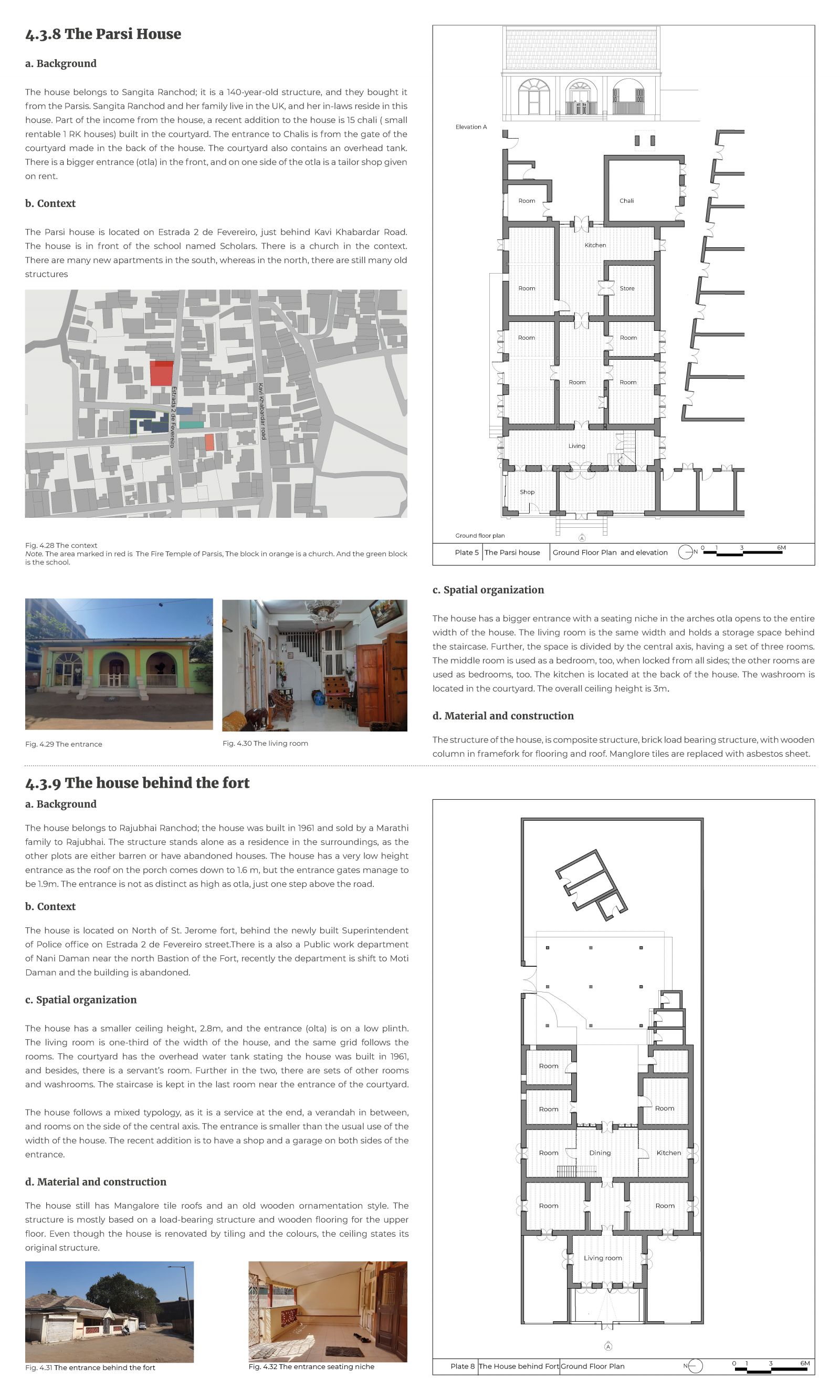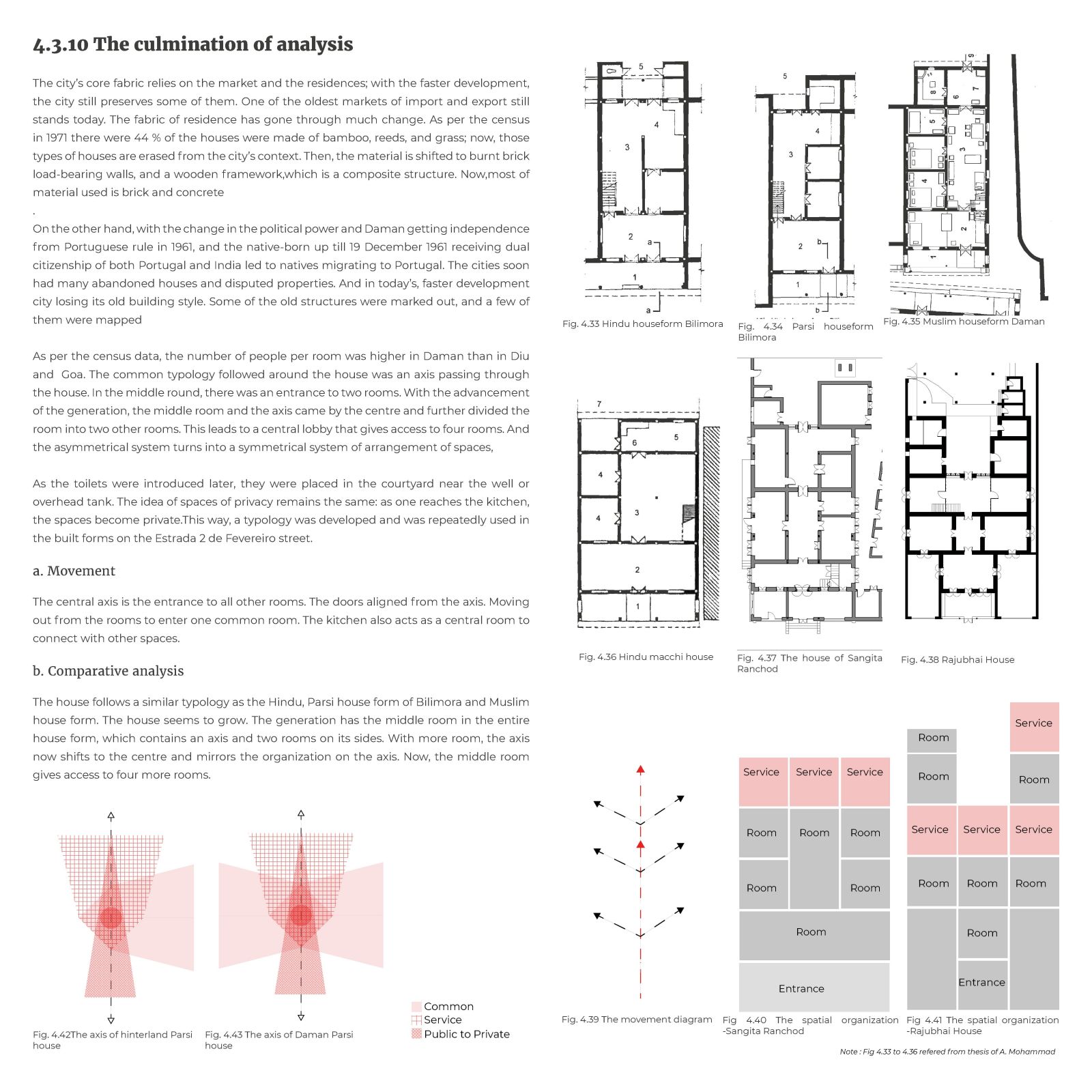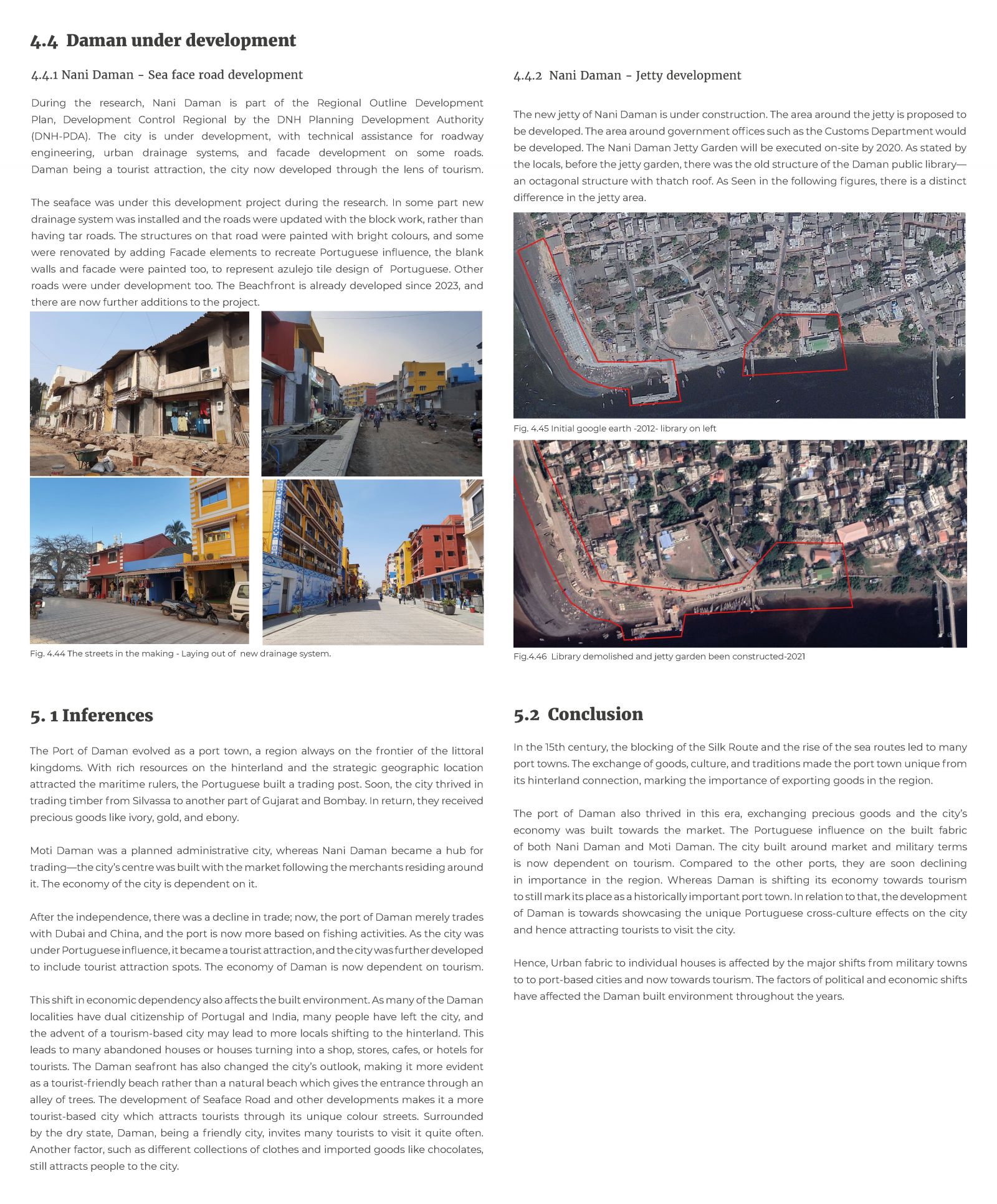Your browser is out-of-date!
For a richer surfing experience on our website, please update your browser. Update my browser now!
For a richer surfing experience on our website, please update your browser. Update my browser now!
The Port towns are the cities built around the economic concept. Markets are the core of the city, where there is not only an exchange of goods but also crafts, tradition and culture. The cities which are the face of the country in the trade. The ones who interact with the technology. India had many profound port towns which brought in major changes in the kingdom nearby. The port of Daman, known for the Portuguese settlements, just came for the trade and left with colonizing the region for almost 400 years. The city is known for its trade of timber and bamboo, and its port is now only used for fishing catchment areas. This research analyses the historical context of the city to understand its growth, and documents some of the surviving old structures. The aim is to analyse the spatial organization of the city and the architectural elements. The other port towns of India, are declining, whereas Daman is shifting its economy from the markets to the tourism in order to sustain the economy and its remarkable relevance around the hinterland connections.
View Additional Work

